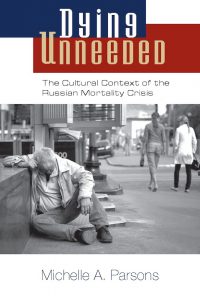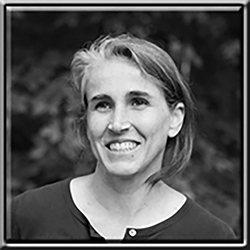By Heidi Toth
NAU Communications
The early 1990s was, statistically, not the best time to be alive in Russia.
In fact, 1993-94 marked a macabre worldwide record—the apex of an extreme increase in mortality rates not explained by famine, war or a disease outbreak. Alcohol, injuries (usually suicide) and cardiovascular disease were the most common causes of death, and white, middle-aged men with low levels of education were most susceptible. Average life expectancy for a man in Russia in the ‘90s was 58 years old.
Epidemiologists proposed various reasons for this. The Soviet Union had fallen, opening the country more to the rest of the world. Yet the increased death rates continued, then didn’t correct quickly, so much that in 2011, almost two decades after the apex, male life expectancy was only 63 years, the lowest for its income level, according to the World Bank.
That’s 20 years and 6,000 miles removed from Northern Arizona University, but for one professor it’s potentially front and center to mysteriously increasing mortality rates in regions throughout the United States, including Yavapai County. Ethnographer Michelle Parsons, who in 2006 went to Russia to study the die-off, recently earned a two-year, $142,000 grant from the National Science Foundation to study this at-risk group in northern Arizona and reveal more contextual factors that statistics cannot.
Her research centers on answering the question the Russians she interviewed always seemed to come back to: “What makes life worth living?”
“Given that the causes of death, a lot of them are related to mental health or behavioral issues, there’s some underlying social distress that I would like to understand,” Parsons said. “When I talked to people in Russia I heard over and over again, ‘Nobody needs us anymore. We’re unneeded.’ My job became to unpack what that means.”
In Russia, it meant a loss of social connections. Under the Soviet-era shortage economy, people were needed and valued; they could trade goods and services, offer favors, help others. When the system fell, large swaths of low-educated middle-aged Russians found themselves unable to contribute.

Today in the United States, a similar demographic is facing a similar crisis. The mortality rate among non-Hispanic whites between 40 and 55 years old with low education levels are rising, inconsistent with a long history of falling mortality rates throughout the world. Here, drug-related issues and suicide are the strongest drivers of excess mortality.
Parsons picked Yavapai County because it has the highest mortality rate for this group in northern Arizona and one of the highest mortality rates in the country. She’s starting by attending meetings of stakeholder groups like the Suicide Prevention Coalition and community health improvement partnership meetings and interviewing individual stakeholders. She asks about the stakeholders’ experiences and impressions of Yavapai County, their thoughts and work on health issues in the county before addressing the mortality crisis and what they think is happening.
From there she’ll move to individuals in the community most at risk: between 40 and 55 years old and with an associate’s degree or lower. The study will focus on non-Hispanic whites, but she’ll interview anyone who falls into the age and education brackets—she’s actually hoping to get enough participants who identify as Hispanic to compare the two ethnic groups. Hispanics tend to have better health compared to their income level, which social scientists often attribute to their sense of community.
Based on literature and her experience in Russia, Parsons hypothesizes the increased death rates among non-Hispanic whites is related to the lack of community and social connections and a feeling of being needed. Commentators also have linked regions with greater excess mortality to the election of Donald Trump, suggesting a previously enfranchised group is reacting to feeling left behind. There is a need for deeper understanding of the social dynamics at play, she said.
“Why does this matter? Because most of the time when we talk about social connections in epidemiology, we talk about what people get from other people,” Parsons said. “And here the Russians were saying it was more important what they were able to give to other people.
Of course, Americans of 2017 could be completely unconnected to Russians of 1994. Parsons is prepared to go where the conversations lead her. The purpose of ethnography, which began as a method of anthropology, is to be immersed in a subculture and understand local logic and ways of thinking and living.
Regardless of what she finds, Parsons hopes her findings lead to intervention opportunities for residents of Yavapai County most at risk of dying and collaborative opportunities to look at other regions in the country or other subgroups of this population. She’s excited to be moving forward, along with anthropology master’s student Cassandra Feely.
“You almost wish you had your data before you do the project,” Parsons said with a laugh. “I’m curious what’s going to arise in this project.”



